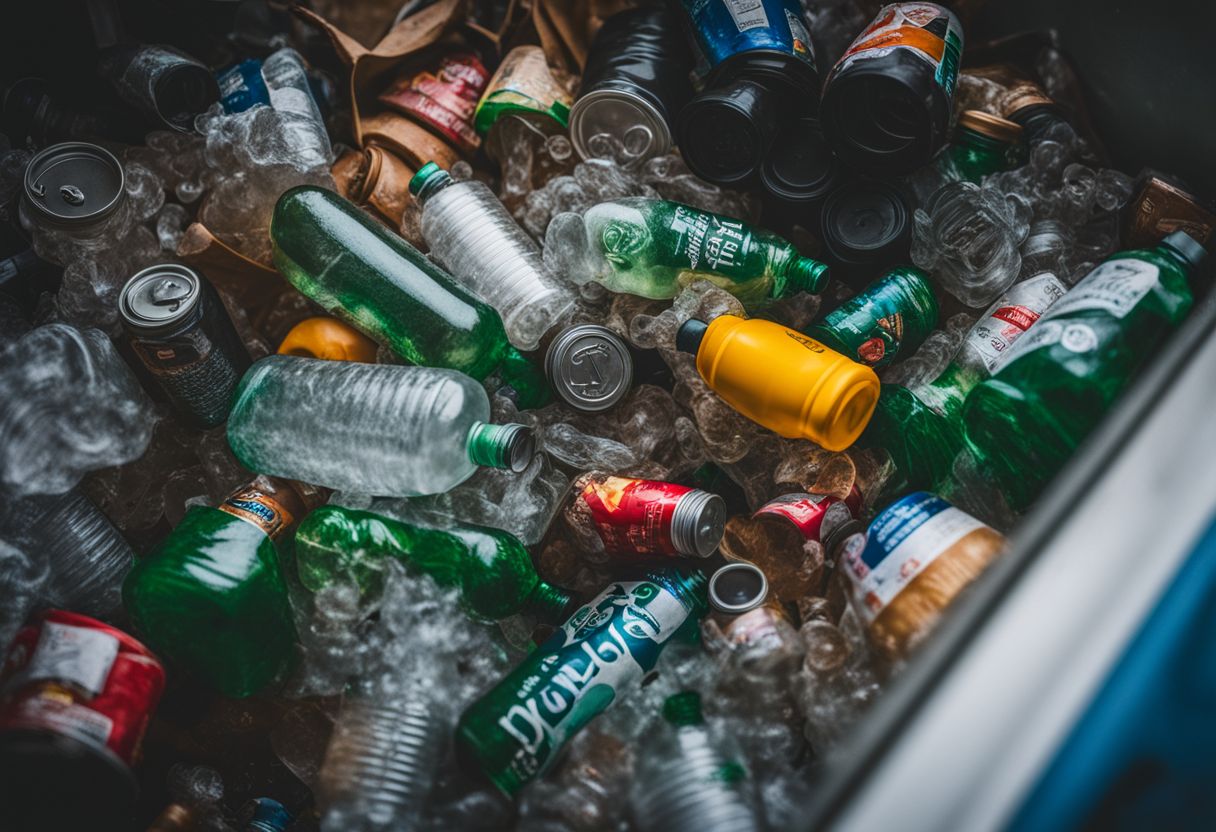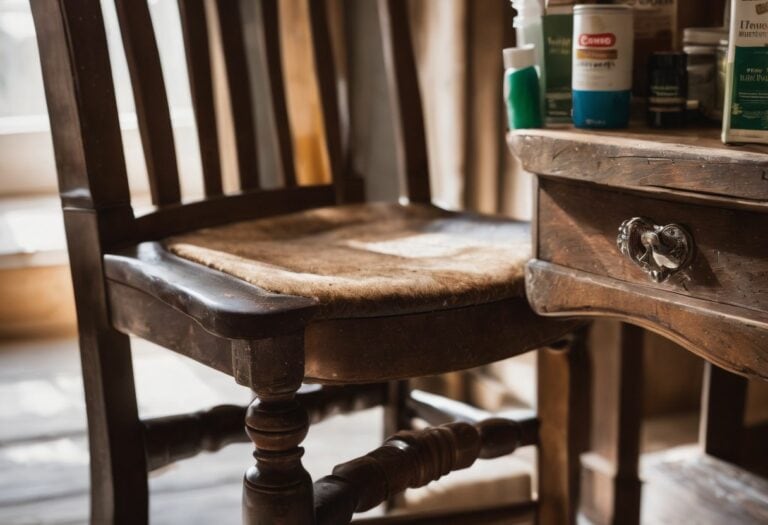Unraveling Creativity: What is the Difference Between Upcycle and Repurpose?
Have you ever found yourself scratching your head over the difference between upcycling and repurposing? You’re not alone. It’s a little puzzle that many of us have tried to solve, particularly since both methods involve breathing new life into old materials in some manner.
Despite their similarities though, these two methodologies represent distinct approaches towards waste management and resource conservation. In this article we’ll delve into the nitty-gritty of each process, equipping you with knowledge on when exactly to utilize each method for optimal effect.
Don’t let this opportunity slip away; join us today in boosting sustainability one step at a time!
Key Takeaways
- Upcycling involves transforming waste materials into new and improved products, while repurposing focuses on giving new life to old items without significant changes.
- Upcycling aims to create something of higher quality with a new purpose, while repurposing uses items as-is or with minimal alterations.
- Both upcycling and repurposing help reduce waste and conserve resources, but upcycling involves a higher level of transformation and intent to create something new, while repurposing focuses on practical uses for old items.
What is the Difference Between Upcycle and Repurpose?

Recycling, upcycling, and repurposing are all ways to help our planet. They use old things in new ways, so we don’t make as much waste. First, let’s talk about recycling. This uses heat or chemicals to break down trash into raw materials again.
Next is upcycling. It changes something without breaking it down first. The idea is to keep the history of the item alive while giving it a new life. I love this because it lets me be creative.
Then there’s repurposing. This means finding a new job for an old item without changing its form much at all! It’s like saying “Hey, you were great at that old job but how about this fun, new gig?”.
What is Recycling??

Recycling involves a process where waste materials are transformed into new products, helping to reduce the consumption of raw materials and conserve resources.
The process and purpose
Recycling is a way to take care of our planet. It takes old things and makes them new again. The goal is simple – less waste thrown away means Earth feels better! This task happens in steps: first we collect junk, like paper or plastic; second, we break these items down into small pieces; lastly, those bits get turned into raw stuff for making brand-new goods.
This method helps us save resources too! For instance, by recycling one tin can, we save enough power that could run a TV for three hours! So you see how important it is? Every bit that gets reused equals more energy saved and more natural beauty preserved.
Benefits for the environment
Recycling helps our Earth a lot. It lessens the need to pull out new raw stuff from the ground. Less mining keeps our environment safe and clean. Also, recycling makes fewer wastes go in landfills and oceans.
It is good for all of us.
Upcycling also does wonders for nature. Very little waste goes into landfills when we upcycle old things. We make beauty from trash without making more litter or pollution. So, using upcycled items means we keep our world healthy and green.
What is Upcycling??
Upcycling involves transforming waste materials into new and improved products or items for a different purpose.
The transformation of waste materials
When it comes to upcycling, one of the key elements is the transformation of waste materials. Instead of throwing away old items or materials, upcycling involves finding creative ways to repurpose them and give them a new life.
This can include renovating furniture, redesigning clothing, or even restoring old electronics. The goal is to take something that would otherwise be considered waste and turn it into something valuable and useful again.
Not only does this help reduce waste in landfills, but it also saves resources and energy that would have been needed for producing new items from scratch. Upcycling is a sustainable solution that allows us to make the most out of what we already have while encouraging creativity in our everyday lives.
Creative reuse for a different purpose
When we talk about creative reuse for a different purpose, we’re referring to the act of finding new uses for old items. Instead of throwing things away, we can think creatively and repurpose them in unique ways.
This means giving something a new life by using it in a completely different way than originally intended. It’s all about being resourceful and thinking outside the box to find innovative solutions for everyday objects.
By doing this, we can reduce waste, save money, and promote sustainability in our daily lives. So next time you have an old item that you no longer need, consider how you can give it a new purpose instead of just throwing it away.
What is Repurposing?

Repurposing involves giving new life to old items by using them in a different way.
Giving new life to old items
Repurposing is a creative way to give old items a fresh start and purpose. Instead of throwing them away, we can find new uses for things that might otherwise end up in the landfill.
By repurposing, we’re reducing waste and conserving resources. We can turn an old ladder into a bookshelf or transform mason jars into stylish candle holders. The possibilities are endless! Repurposing allows us to be resourceful and eco-friendly while also encouraging our creativity.
Let’s give those old items a chance to shine again!
The difference from upcycling
When it comes to repurposing, it means using something again without changing it. You’re giving new life to old items by finding a different use for them. Unlike upcycling, which focuses on transforming materials into something new and unique, repurposing involves using the item as-is or with minimal changes.
It’s about finding practical uses for things that may have otherwise been thrown away. So while upcycling is all about creativity and artistic expression, repurposing is more focused on long-term functional use.
Key Similarities Between Upcycling and Repurposing
Both upcycling and repurposing involve using old items in a new way, reducing waste, and preserving resources.
Both involve using old items in a new way
Using old items in a new way is the common thread between upcycling and repurposing. When we upcycle or repurpose, we take something that would have been thrown away and give it new life.
We find creative ways to transform these items into something useful or beautiful. By doing this, we reduce waste and make the most out of our resources. It’s a great way to be resourceful and eco-friendly while also encouraging creativity.
Reducing waste and preserving resources
Reducing waste and preserving resources are key similarities between upcycling and repurposing. By using old items in new ways, both methods help to minimize the amount of materials and products wasted.
This sustainable approach promotes waste reduction, resource preservation, and the conservation of natural resources. Through reusing materials and giving new life to old items, upcycling and repurposing contribute to the reduction of demand for virgin resources.
By adopting these practices, we can achieve sustainable resource utilization and play our part in maintaining a cleaner environment.
Key Differences Between Upcycling and Repurposing
Upcycling involves a higher level of transformation and the intent is to create a new product, while repurposing focuses on giving new life to old items without significant changes or alterations.
Level of transformation
When comparing upcycling and repurposing, one key difference is the level of transformation involved. In upcycling, the focus is on transforming a used or discarded item into a new product of higher quality.
This can involve modifying or enhancing the original item to serve a better purpose or function. On the other hand, repurposing involves giving new life to old objects by using them for different purposes without necessarily improving their quality.
While both methods involve making changes to existing products, upcycling generally entails more significant transformations compared to repurposing.
Intent and purpose
When it comes to upcycling and repurposing, the intent and purpose are what set them apart. The intention of upcycling is to transform waste materials into something new and different, often with a creative twist.
It involves taking old or discarded items and giving them a fresh purpose, such as turning an old ladder into a bookshelf. On the other hand, repurposing focuses on giving new life to old items without significant transformation.
The purpose is to find alternative uses for these items rather than throwing them away. For example, using an old dresser as a TV stand instead of buying a new one. Both upcycling and repurposing contribute to reducing waste and promoting sustainability in their own unique ways.
Long-term use
When it comes to upcycling and repurposing, one key similarity is the concept of long-term use. Both methods involve taking old or discarded items and finding new ways to use them instead of throwing them away.
This means giving these items a second chance at life and preventing them from ending up in landfills. By reusing materials in creative ways, we can reduce waste and conserve resources for a longer period of time.
Upcycling promotes sustainability by transforming old items into something new that can be used again and again, while repurposing allows us to give old objects a different purpose that extends their lifespan.
When to Choose Upcycling vs. Repurposing
Consider your specific needs and the level of transformation you desire in order to decide whether upcycling or repurposing is the better option for you. Read more to understand these distinctions and make an informed decision.
Considerations for your specific needs
When deciding between upcycling and repurposing, it’s important to consider your specific needs. Think about the level of transformation you want to achieve. If you’re looking for a complete overhaul and turning something into a completely different product, upcycling might be the way to go.
On the other hand, if you want to give new life to old items without major changes, repurposing could be more suitable. Consider your intent and purpose – whether it’s creating something with higher quality or finding a new use for an item.
Also think about long-term use – do you need something that will last or are you looking for a temporary solution? By considering these factors, you can make an informed choice between upcycling and repurposing that suits your specific needs.
Examples of when to use each method
There are different situations where you might choose to use upcycling or repurposing. Here are some examples:
- When you want to give your old clothing a new life, you can upcycle them into unique accessories like bags or jewelry.
- If you have plastic bottles that need to be reused, recycling is the way to go. They can be broken down and turned into new products.
- When you have old furniture that no longer serves its purpose, upcycling can transform it into stylish and functional pieces for your home.
- Paper waste can be recycled to create new paper products, like notebooks or cardboard.
- Glass jars can be upcycled into decorative vases or storage containers, adding a creative touch to your space.
- Electronic waste contains valuable materials that can be extracted through recycling.
- Vintage vinyl records can be upcycled into wall art or functional home decor items, preserving their nostalgic charm.
Benefits of Upcycling and Repurposing
Upcycling and repurposing offer numerous benefits, including waste reduction, cost savings, and fostering creativity. Discover how these practices can make a positive impact on the environment and your lifestyle.
Reducing waste and landfills
Reducing waste and landfills is crucial for the environment. By upcycling and repurposing materials, we can give new life to old items instead of throwing them away. Upcycling transforms waste into higher-quality products, reducing the need for items to be sent to landfills.
This helps minimize contamination from harmful chemicals in landfills. Recycling also diverts waste from landfills, further reducing negative environmental impacts. Both upcycling and recycling contribute to preserving resources and promoting sustainable practices, ultimately helping create a more circular economy.
Saving money
When it comes to upcycling and repurposing, one of the benefits that stands out is the ability to save money. Instead of buying new items, you can reuse what you already have or find inexpensive materials that can be transformed into something useful.
By getting creative and finding new purposes for old things, you’ll be able to cut down on expenses while still meeting your needs. This is especially beneficial for those who enjoy DIY projects and thrifty living.
Plus, by reducing your reliance on buying new items, you’ll also contribute to waste reduction and promote sustainable living practices.
In addition to saving money, upcycling and repurposing have other advantages too. They help in reducing waste in landfills and conserving resources as we make use of what we already have instead of throwing them away.
These practices also encourage creativity by pushing us to think outside the box when it comes to finding new uses for old items. Moreover, they contribute towards our environmental consciousness by promoting eco-friendly habits in our daily lives.
Encouraging creativity
Upcycling and repurposing are not just about reducing waste and conserving resources, they also encourage creativity. These practices allow us to think outside the box and come up with unique ways to reuse old items.
Through upcycling, we can transform waste materials into something new and beautiful, using our imagination and craftsmanship. It’s a chance for artistic expression and innovation by incorporating different techniques and materials to create one-of-a-kind pieces.
So when you choose to upcycle or repurpose, you’re not only making a sustainable choice but also tapping into your creative side.
Conclusion
In conclusion, the difference between upcycling and repurposing lies in their approach. Upcycling involves transforming old items into something of better quality, while repurposing alters the original function to serve a new purpose.
Both methods help reduce waste and promote creativity, but upcycling allows for the preservation of functionality, while repurposing focuses on creating something entirely new. By understanding these distinctions, we can make more informed choices about how we reuse materials and contribute to a more sustainable future.
FAQs
1. What is the difference between upcycle and repurpose?
Upcycling is the process of transforming an item into something of higher value or quality, whereas repurposing involves finding a new use for an item without altering its original form.
2. Can you provide examples of upcycling?
Examples of upcycling include turning old t-shirts into tote bags or using wine bottles as decorative vases.
3. How does repurposing differ from recycling?
While recycling involves breaking down materials to create new products, repurposing focuses on finding alternative uses for items without going through a manufacturing process.
4. Which is more environmentally friendly, upcycling or repurposing?
Both upcycling and repurposing are considered environmentally friendly practices as they reduce waste by giving objects a new purpose instead of throwing them away.
5. Do I need any special skills to upcycle or repurpose items?
No special skills are required for upcycling or repurposing items; it simply requires creativity and imagination to find new ways to use old objects in innovative ways.







